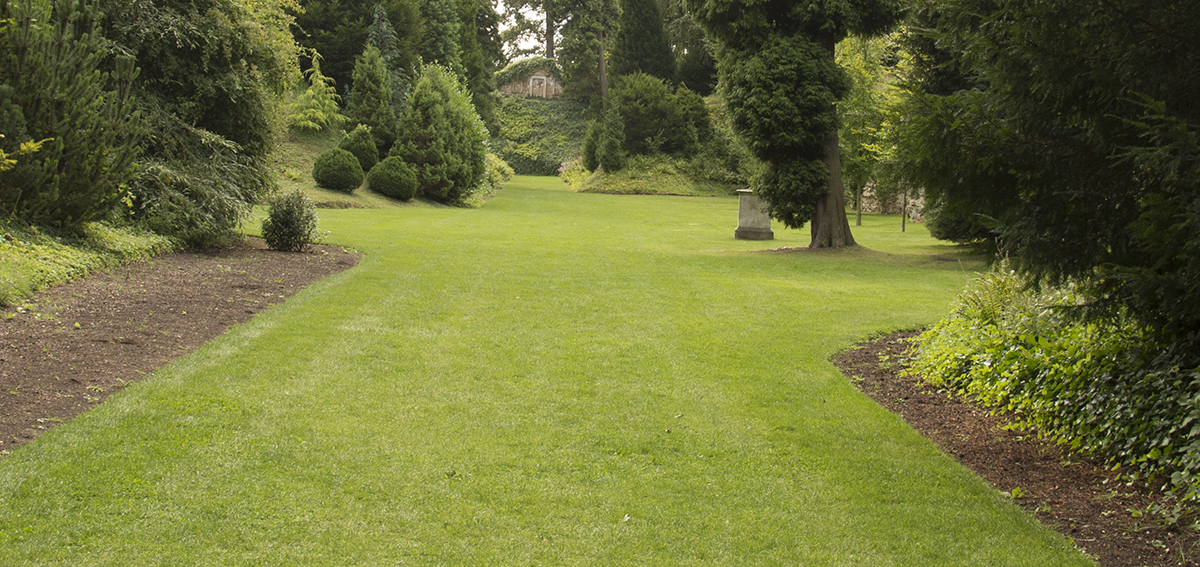It’s often said that you don’t need to prepare the ground for turfing as well as if it is to be sow. I don’t believe this is the case as in both cases the better the area is prepared the smoother the finished lawn will be. Again the surface needs to be cultivated, raked and compacted as for a seeded lawn. Fertilizer should also be applied and raked in the same. The difference comes from then on.
The first big difference is if the weather turns bad grass seed will happily stay in the bag in a cool dry place until the weather improves. Turf will not. In summer turf needs to be laid they day it is delivered. The best policy is then to prepare your ground for the turf so ounce it is delivered you are ready to lay it straight away. Measure you area in square metres and decide if you are going to be able to lay it all in one go. Bear in mind a roll of turf is sold in rolls weighing about 20 to 30 Kg. That in itself may not seem that much but remember each roll has to be picked up, carried to where it is to be laid, positioned and unrolled. Be realistic about how much you or you and your helpers can do. Also if the area to be the lawn is very irregular it may not be possible to accurately work out the area. Turf suppliers do not take back turf once sold. It may well be best to order part of what you need, say half or two third, lay that and then order the remainder.
Now comes the job of sourcing your turf; there are two types available meadow turf and seeded turf. Meadow turf is a farmer’s field someone has stripped the turf off and the grass is therefore very suitable for grazing cows and sheep on. If you are planning to keep a sheep, and I can’t imagine why, meadow turf could be suitable but for a garden lawn it is a waste of money. Avoid it! Seeded turf is grass that has been sown using a good quality lawn seed mixture solely for the purpose of producing turf. This is what you want and there are many turf growers spread across the country. Go and have a look at what’s available, any reputable grower is only too keen to show you the turf they produce. It should be a rich green, the turfs a uniform thickness, width and length, and the turfs should hold together well. In the field it should look just like a really good garden lawn.
Laying the turfs
Once delivered you want to get straight on with the job; so it is best to get prepared before its delivered. You will need plenty of timber boards to work from as you lay the turf, enough to reach the full width of the area to be turfed plus sufficient extra to stretch from the nearest hard surface to the furthest part to be turfed. The other things will be stout gloves for everyone, a wheel barrow or two if you are moving the turfs any distance and a good sprinkler and hose – the last being essential.
Start nearest to where the turf is and unroll the turf in a straight line across the width of the site. At the end of the first roll butt the end of the next turf up to it and unroll that. Carry on like that until you have a row across the lawn. Now place timber boards onto this row of turfs and start the next row butting the turfs close together but start about half a roll in. This way you will stagger the joints between the ends of the turfs. Carry on across the area to be turfed in this manner keeping the turfs butted close together. Keep working off the boards at all times or you will sink into the newly laid lawn. If the edge of the lawn is not retained by paving or fencing finish the edge by running a row of turfs along the edge to form it. Avoid any short pieces of turf at the edge. Any gaps can be either filled in as you go or near the end, it’s a mater of personal preference. The best way I’ve found to cut them is with a strong replaceable blade craft knife, at least that way the fact it ruins the blade doesn’t matter. Knee pads are also very useful, the more padded the better, but either way by the end of the day your knees are still going to ache, along with your back.
Once you have finished for the day you must water the turf really well. Set your sprinkler up and leave it on until the water has soaked through the turfs and saturated the soil underneath. This can be easily checked by lifting up a corner of a turf. DO NOT stand on the lawn once soaked; you will sink straight in spoiling the lawn. Keep the lawn really well watered until its established. This is easy to gauge by lifting up a corner, at first you will see the fine new roots growing on the underside of the turfs and then you will just not be able to lift up the turf from the soil. At that point it is established and can be treated as an ordinary lawn. You must not let the turf dry out. If it does it will shrink and no amount of watering will reverse that, you will be left with a lawn which is a mass gaps along the edges of the turfs.



